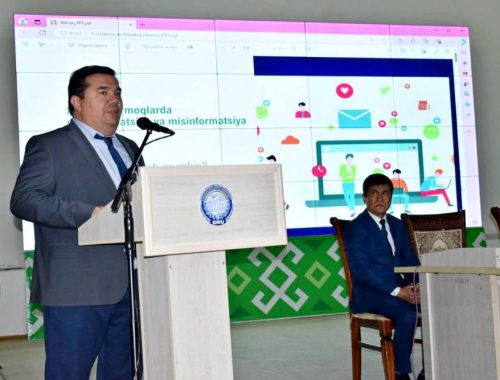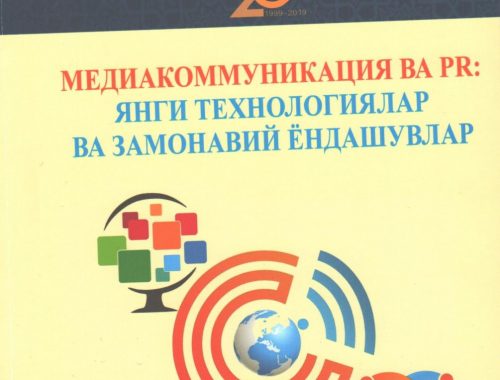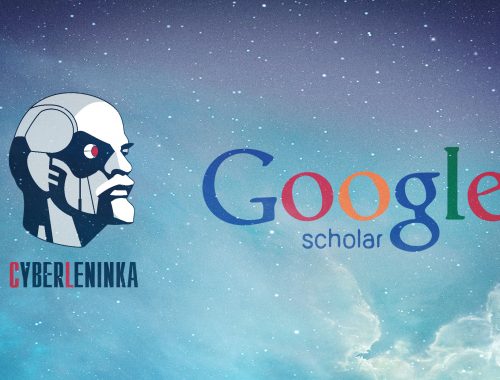Мақола жаҳон медиа маконида Ўзбекистон имижининг ёритилиши муаммолари, унинг “сиёсий ва иқтисодий барқарор давлат” нуфузига эришишига бағишланади. Айнан ОАВ орқали давлат манфаатлари ифода этиб борилади, маълум бир халқаро ёки минтақавий масаладаги сиёсий позиция билдирилади, одамларнинг менталитети шаклланади, давлатнинг ташқи имижи яратилади, халқаро муносабатлар мустаҳкамланади, турли блоклар ташкил қилинади, баъзан жиддий қарама-қаршиликлар бартараф этилади. Бу жараёнда оммавий ахборот воситаларимиз замонавий технологиялар, хусусан интернет ва сунъий йўлдош имкониятларини ишга солмоқдалар. Республикадаги газета-журналлар, телерадиоканаллар ва ахборот агентликлари томонидан олиб борилган ишлар, эришилган муваффақиятлар ва бу борада мавжуд муаммолар атрофлича таҳлил этилиши давр талабидир.
Статья посвящена освещению проблем имиджа Узбекистана в мировом медиа-пространстве, достижению статуса «политически и экономически стабильного государства». Именно через СМИ создаётся внешний имидж государства, укрепляются международные отношения, создаются различные блоки, иногда предотвращаются серьёзные противостояния и т.п. В процессе создания внешнего имиджа государства СМИ в Узбекистане привлекают возможности современных технологий, в частности Интернета и искусственных спутников. Всесторонний анализ деятельности узбекистанских газет-журналов, телерадиоканалов и информационных агентств, достигнутых ими успехов, также существующих проблем – требование современности.
The article is dedicated to the problems of Uzbekistan’s image as “a politically and economically stable state” in the global media space. It is the mass media outlets through which the interests of state and political position on some international and regional issue are expressed, the mentality of the people is shaped, the state’s external image is nurtured, the international relations are bolstered, various blocks are established, sometimes outstanding confrontations are prevented, and so on. In this endeavor the mass media in Uzbekistan attract the capacities of the latest technologies, and in particular, of the Internet and satellites.
Gaining by states in the world of their independence is considered to be a historical process. By 90s of the 20thcentury the new states have emerged in the Eastern Europe and on the territory of the Commonwealth of Independent States, also known as CIS.
The young nations, as they develop the regional relationships, have embarked anew on a process of mutual integration. Such former socialist countries in Europe as the German Democratic Republic, Hungary and Romania, despite their territorial proximity, went through a unique stage of independent development. In this context, we can cite as an example Moldova and Georgia, the Ukraine and Russia, Kazakhstan and Kyrgyzstan.
The Republic of Uzbekistan confidently traverses along its own path of development and vividly demonstrates to the world public the efficiency of domestic reforms being implemented for over a span of 22 years of its Independence.
The President of the country, government, Uzbekistan’s diplomatic missions abroad, tourism companies and trade delegations, as well as the mass media have done number of important things along this way.
At first, the young state, which has just officially obtained the status of a sovereign nation, faced such an important task as how to gain the status of politically and economically stable state. Such a state which needed a solid recognition and acclamation didn’t hesitate but confidently moved forward along its independently chosen path of development.
So, we are putting forward a following question: what measures have been taken by mass media in this important historical process which encompasses the years 1991-2013? What are the achievements and what are the problems which haven’t been tackled, yet? What else could be done to raise the authority of a sovereign state and shape its positive image in the global media space?
Due to this very reason, it is a must of the time to undertake a comprehensive scrutiny of the Uzbek newspapers and magazines, television and radio channels and news agencies, as well as analyze the successes they gained and the problems which prevail now in the sphere. Adding to this, we should pay a special attention to the work of foreign mass media which contribute to propagating the state in the global media space.
However, it is true that now thanks to booming of the global network of the Internet the traditional borders between the national and foreign mass media have somewhat become transparent. As an outcome, not only Tashkent-based newspapers but also those published in the regions do serve the cause of shaping an external image of Uzbekistan and developing the national information segment.
Truly, the notion of mass media has expanded a bit. The traditional information space has radically changed.
The President of Uzbekistan Islam Karimov wrote in his book «The higher spirituality is an invincible power» published in the Uzbek language: «All of us well comprehend that at the time, when the events worldwide take place in a rapid manner, standing ready to actively use the vast opportunities of the latest information and communication technologies and Internet is a necessary criterion of the work of mass media people who devoted themselves to print, information and media spheres, and particular, in the television and radio, and those who have embraced the idea to become skilled specialists and see their future in this area» (Karimov I.A. Yuksak ma’naviyat – yengilmas kuch. – T.: Ma’naviyat, 2008).
At the moment, the information acquires yet greater speed and intensity. The Russian scholar I.A.Vasilenko («Геополитика современного мира» – М., 2006.) has once said that in the contemporary conditions the power and influence of any state depend on its niche in the information space. What does this mean? This stands for the fact that now the information is able to fill in the vacuums of modern society.
It is the mass media outlets through which the interests of state and political position on some international and regional issue are expressed, the mentality of the people is shaped, the state’s external image is nurtured, the international relations are bolstered, various blocks are established, sometimes outstanding confrontations are prevented, and so on.
In this endeavor the mass media in Uzbekistan attract the capacities of the latest technologies, and in particular, of the Internet and satellites.
We should also underscore the role of foreign media in reporting more about the large-scale reforms in Uzbekistan in the global media space.
The representatives of foreign media travel to Uzbekistan on the so-called Mega-Infotour program which has already turned into a fine tradition. Thus, they take an active part in reporting about the large events, industrial expos and cultural occasions held in Tashkent and nationwide. Also, the foreign correspondents accredited long-term with the Uzbekistan Foreign Ministry effectively work – as we may put it so, for the well of our nation.
Uzbekistan’s image in the global media space in its broader sense includes the idea related to the information disseminated by real and virtual media, general communications in terms of political status, economic and social capabilities, investment potential, culture, art, sports, history, and generally speaking, with the past and today’s life of a state.
According to experts, it is not only the state which tends to engage in external propaganda of a certain country. The reason for this is the fact that each and every country has its own history, culture and art.
The notable destinations located along the Great Silk Road of Uzbekistan, rich cultural monuments and heritage of ancestors which brought fame to the Uzbek nation and glorified the great military commanders, scholars, poets and artists around the world continue astonishing the entire humankind.
In this regard, the sports also occupy a special place. During the years of Independence the Uzbek sportspeople made the state flag of the young sovereign nation hoisted high and the national anthem performed at the world sports arenas. President Islam Karimov of Uzbekistan has once said that «nothing as sports can raise the image of a state».
At the moment, the correspondents of the republican mass media and national bloggers effectively utilize the vast opportunities of the Internet and satellites. By doing so, they make a tangible contribution to raising the authority of Uzbekistan and solidifying it more.
And here is the list of leading republican newspapers, television and radio channels (www.mtrk.uz) and news agencies, and in particular, the National News Agency of Uzbekistan (www.uza.uz) and Information Agency «Jahon» (jahonnews.uz). Their work takes on a special significance in terms of the matter in discussion in this article. For instance, such traditional genres as news stories, reportages, articles, photo and video footages based on the latest requirements turn complicated from day to day.
Yet, the most important in this is the fact that in immediate transmission or broadcast of such news stories and footages to abroad the national media outlets pay a keen attention to using the new technological skills. As an outcome, they have achieved some positive results.
However, here we should ask: to what extent the language and style of the globally-disseminated news, news stories and other materials correspond to international standards? What do foreign readers and specialists think about it? Therefore, we suppose to undertake a comparative analysis of official media websites on the Internet, their achievements and shortcomings.
Unfortunately, to date not a single scholarly research was carried out and not a single specific work was accomplished on managing information related to Uzbekistan in the global media space in terms of averting negative flows in this direction and furthering the information based on the national interests.
The topics of trends in the world media space, the outstanding problems and prospects have been scrutinized in the CIS countries, and particularly, in the Russian Federation, Ukraine, Belarus and industrialized states both in the West and East. For example, T.Parsons, E.Yudina, S.Anholt, D.Klimenko, M.Nazarov, V.Kastels and number of other scholars did research on these issues related to media space.
The said problems related to the electronic journalism were scrutinized by such scholars as F.Muminov, Sh.Kudratkhodjaev, D.Rashidova, N.Muratova and other scientists and young researchers. They have published monographs, books and science articles.
Thus, the group of researchers pondered the idea of a media space as a whole, and yet the second group researched its specifics related to the web.
And here we can draw a conclusion: the topic of component foundations which create Uzbekistan’s image in the global media space, principles of its development and technologies have not been studied to date, yet. There is not either a conceptual approach to the topic in terms of a scientific point of view.
That means that it is necessary to research and analyze the problems related to the component foundations of Uzbekistan’s image in the global media space and introduce the final outcomes of such research, firstly, into the media system. Apart from that, we need to elaborate in scientific and methodological way the integral conceptual approach in terms of fuller exploiting the available global media space and its capabilities, as well as bettering the external media propaganda and raising the efficiency of cooperation with foreign media.
With a view of improving the principles of creating the image of a sovereign state in the global media space given the conditions of the so-called 21st ‘information century’ we need to analyze the following factors:
- scientific research of a state’s image, its advertizing and external media propaganda;
- joint research along with experts, theorists and practitioners of the ways to tackle the acute problems related to such a phenomenon as various information assaults;
- the shortcomings and problems in the work of national media in terms of solidifying the country’s image, their scientific analysis, collecting views and conclusions on their solutions;
- partial analysis of peculiarities of such a problem in terms of political and diplomatic relations;
- study of coverage of Uzbekistan in foreign media as an equal subject and sovereign state;
- study of the personality’s role (leader of a state) in creating image of a state in the example of interviews by President of Uzbekistan Islam Karimov to national and foreign media;
- analysis of tasks related to the role of web-based newspapers in shaping Uzbekistan’s image in the global media space on the example of national websites registered as media outlets;
- research of the role of audiovisual journalism in furthering the country’s image on the example of such websites of Uzbekistan television and radio channels as mtrk.uz and www.mediabay.uz.
- analysis of contemporary state, problems and shortcomings of the national news segment on the example of official websites of such news agencies as Uzbekistan National News Agency, Information Agency «Jahon» and National Information Agency «Turkiston-press»;
- analysis of development of international journalism in Uzbekistan on the example of Information Agency «Jahon»;
- scrutiny of broad introduction of the cutting-edge information and communication technologies into the media in raising the country’s image;
- publication of methodological tools (workbooks), textbooks and recommendations for students at the journalism faculties and practicing journalists, and so on.
Here it shall be appropriate to use directions and recommendations on the strategy of reforms elaborated in 1991 through 2013 by President of Uzbekistan as methodological and theoretical foundations – the directives which also cover the issues of democratization of society, and particularly, the mass media; the views of scholars and researchers in the West and CIS on the problems related to the global media space and country’s image; fundamental works in journalism, sociology, political science, philosophy and pedagogy authored by Uzbek scholars during the years of Independence; and the most advanced experience accumulated in the history of foreign and national journalism.
The initial science research in national journalism of the problems of Uzbekistan’s image in the global media space, analysis of historical ways of how
scholars and experts of the world journalism pondered this issue and their experience, prospects and specifics of the problem ensure a scientific weight of the research.
There is also a need to expose the extent of how this problem is urgent and how it was studied in the world and national journalism, methodological peculiarities, goals and objectives of the research in elaborating the mechanisms, conclusions, recommendations and proposals in terms of its introduction.
Meanwhile, the problems related to Uzbekistan’s image in the global media space, structural foundations and principles of its development should be thoroughly studied and analyzed.
With an aim to comprehensively scrutinize the problem we must focus our attention to the comparative analysis of the international experience, as well. It is appropriate to classify the views expressed by foreign experts, authors, political observers, scholars, men of science and state decision-makers, businesspeople and media. The entire information on this topic (science works, collected articles, monographs and materials extracted from the Internet, television and radio) must be classified.
Certainly, the mass media is a powerful force. It can present any country to the entire world. Besides, the openness and transparency are ensured through the mass media.
Having said that, what does make up a component foundation which shapes the image of Uzbekistan in the global media space? What shortcomings have there been allowed for in this direction during 22 years of Independence? What else could be done in terms of a positive step ahead? What should be paid attention to along the path of expanding the growing technologies? What measures must be accomplished in the future?
From the points of view of science and theory the need to pay more attention to such and other outstanding problems is a must of modern time.
LITERATURE
- Каримов И.А. Юксак маънавият – енгилмас куч.-Т.: Маънавият.-2008. -176 б.
- Василенко И.А. Геополитика современного мира.-М., 2006. – 395 c.
- Назаров М.М. Массовая коммуникация в современном мире: методология анализа и практика исследований.-М.:УРСС, 2000. -360 с.
- Дўстмуҳаммад Х.Н. Оммавий ахборот воситаларини ривожлантиришнинг демократик андозалари.-Т.:Ўзбекистон, 2005. -56 б.
- Anholt, Simon (2010-01-23). Places: Identity, Image and Reputation. Palgrave Macmillan.




